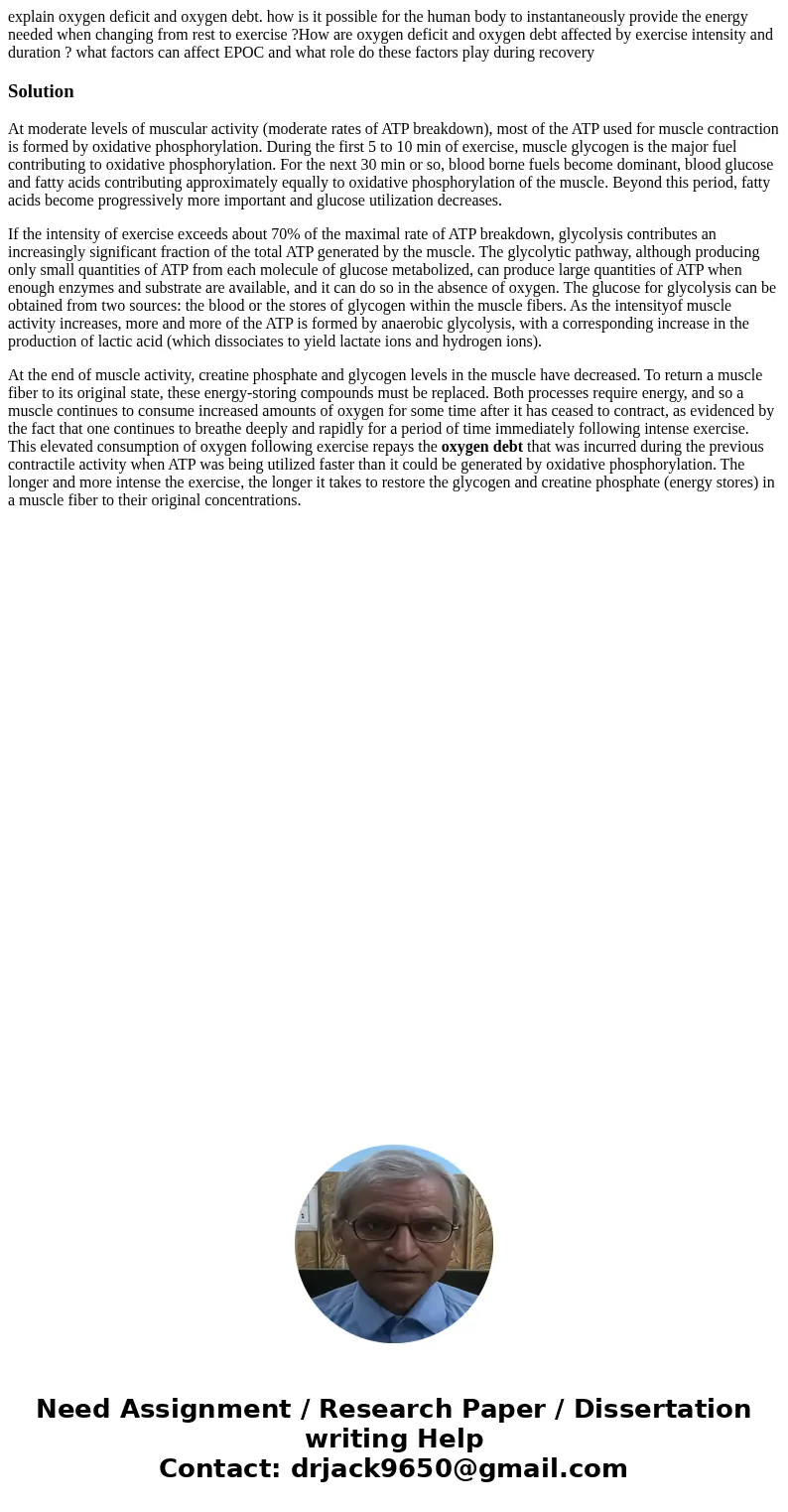explain oxygen deficit and oxygen debt how is it possible fo
explain oxygen deficit and oxygen debt. how is it possible for the human body to instantaneously provide the energy needed when changing from rest to exercise ?How are oxygen deficit and oxygen debt affected by exercise intensity and duration ? what factors can affect EPOC and what role do these factors play during recovery
Solution
At moderate levels of muscular activity (moderate rates of ATP breakdown), most of the ATP used for muscle contraction is formed by oxidative phosphorylation. During the first 5 to 10 min of exercise, muscle glycogen is the major fuel contributing to oxidative phosphorylation. For the next 30 min or so, blood borne fuels become dominant, blood glucose and fatty acids contributing approximately equally to oxidative phosphorylation of the muscle. Beyond this period, fatty acids become progressively more important and glucose utilization decreases.
If the intensity of exercise exceeds about 70% of the maximal rate of ATP breakdown, glycolysis contributes an increasingly significant fraction of the total ATP generated by the muscle. The glycolytic pathway, although producing only small quantities of ATP from each molecule of glucose metabolized, can produce large quantities of ATP when enough enzymes and substrate are available, and it can do so in the absence of oxygen. The glucose for glycolysis can be obtained from two sources: the blood or the stores of glycogen within the muscle fibers. As the intensityof muscle activity increases, more and more of the ATP is formed by anaerobic glycolysis, with a corresponding increase in the production of lactic acid (which dissociates to yield lactate ions and hydrogen ions).
At the end of muscle activity, creatine phosphate and glycogen levels in the muscle have decreased. To return a muscle fiber to its original state, these energy-storing compounds must be replaced. Both processes require energy, and so a muscle continues to consume increased amounts of oxygen for some time after it has ceased to contract, as evidenced by the fact that one continues to breathe deeply and rapidly for a period of time immediately following intense exercise. This elevated consumption of oxygen following exercise repays the oxygen debt that was incurred during the previous contractile activity when ATP was being utilized faster than it could be generated by oxidative phosphorylation. The longer and more intense the exercise, the longer it takes to restore the glycogen and creatine phosphate (energy stores) in a muscle fiber to their original concentrations.

 Homework Sourse
Homework Sourse